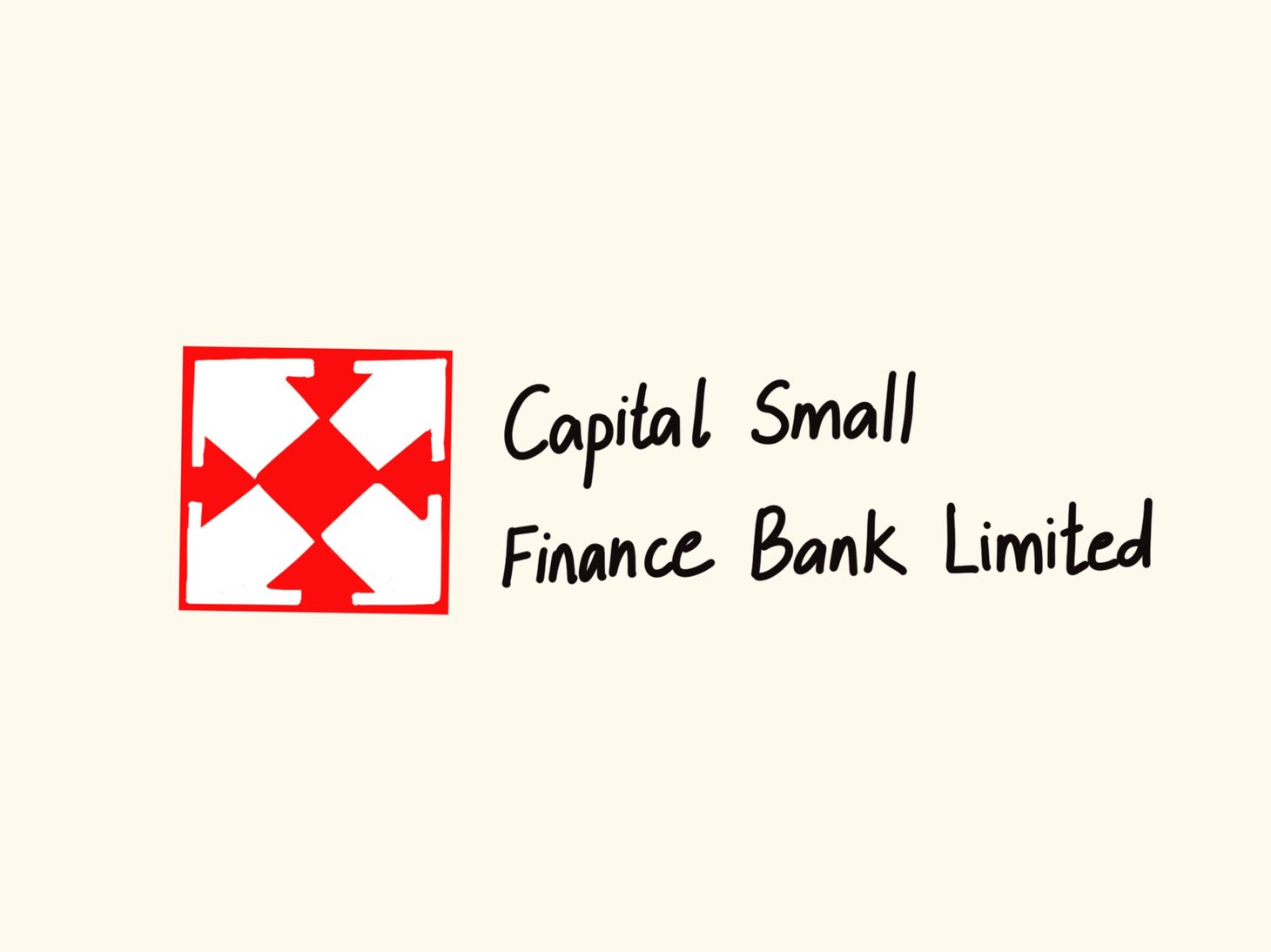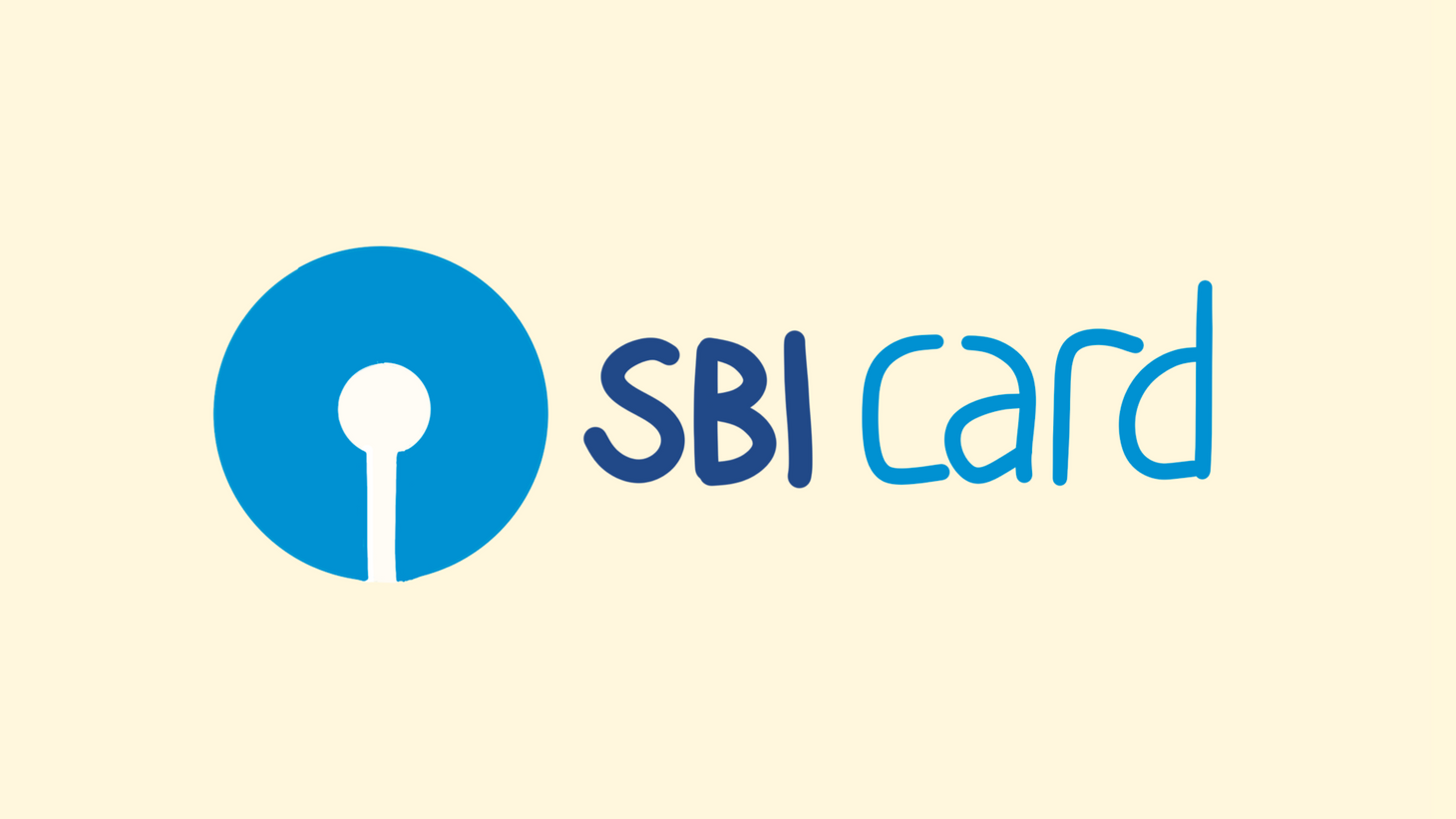Capital SFB: The Right Thing, The Right Way
A rural focused, process oriented bank, with low-NPA numbers is set to go public!

Table of Contents
Hi there!👋
It’s IPO season! The time when many prepone their listing to make hay while the sun shines, and others list for listing’s sake. A few though, naturally reach listing-readiness when it happens to be IPO season. Today, I think, we have one such company on hand.
On 1st November 2021, Capital Small Finance Bank (CapSFB), a 22 year old Bank from Jalandhar, Punjab — filed its Draft Red Herring Prospectus (a proposal document prepared by a company desirous of listing, containing all its relevant information) with SEBI. Once SEBI approves, they’ll publish a revised Red Herring Prospectus, and announce listing dates and listing price.
This article takes you step-by-step on a journey to understand the company, and articulate whether its IPO is a bet worth taking. For those analysing a Bank for the first time, CapSFB is an excellent starting point — relatively small, compared to your SBIs and HDFCs, and hence allowing for easier cognition.
Let’s get started.
Index:
1. Backstory: From Vehicle Hire Purchase Financing, To Local Area Bank, To Small Finance Bank
2. The Business
- Industry: The Playing Field
- Customers: Those Who Transact With The Business
- Products & Services: How The Business Serves Its Customers
- Geography: Where The Business Operates
3. Is it good?
- Past Performance (financials)
- Future Performance (strategy)
4. Does The Management Have Integrity?
5. IPO Pricing
- Past allotments + Growth
- Comparable Market Multiples
6. Closing Comments
Backstory: From Vehicle Hire Purchase Financing, To Local Area Bank, To Small Finance Bank
Ludhiana, Amritsar, and Jalandhar are Punjab's main business hubs. Owing to its central positioning, Jalandhar was home to numerous logistics businesses. Based there, the Samra family was in the business of financing such commercial vehicles since 1964.
Taking his family business learnings into a more formal setup, Sarvjit Singh Samra (the current MD & CEO of CapSFB) procured RBI’s Local Area Bank license. Thus, Capital Local Area Bank started operations in January 2000.
By March 2016, Capital Bank’s Balance Sheet had grown to over ₹2,000 Crores.
Feeling restricted by the geographical constraints of a Local Area Bank license, Capital Bank won a Small Finance Bank license in September 2015; and in April 2016, started operating as India’s first Small Finance Bank!
Definitions - Priority Sectors, MSMEs, and Rural Area
Priority Sectors: Agriculture, MSMEs, Export Credit, Education, Housing, Social Infrastructure, and Renewable Energy.
MSMEs: whose turnover <₹100 Crores, and investment is <₹20 Crores.
Rural Area: where the population as per the latest census is <10,000.
Now, that we have an introduction, let's understand the business.
The Business Of Banking
Banks exist to accept deposits and provide loans. Their success or failure depends on:
- Societal Trust: if this is high, the bank gets more and more deposits.
- Astute Lending Practices: selecting only honourable borrowers, and most importantly, recovering dues from them.
- Efficient Operations: managing allied workings like accounting, marketing, compliance, etc.
To go deeper, we'll use four lenses – Industry | Customers | Products & Services | Geography
Industry: The Playing Field
Among the world’s six largest economies, India is the fastest growing. But you already knew that. The following table shows that, despite being the 6th larget economy by GDP, India is far behind its peers when it comes to credit. Even if India’s total credit grows by 70%, it would still have the lowest Credit to GDP ratio among the top six.
| Countries | 2021 GDP Size (in USD Billions) | GDP Growth Projection (till 2030) | Credit To GDP ratio (2019) |
|---|---|---|---|
| USA | 22,675 | 2.30% | 150% |
| China | 16,642 | 5.10% | 205% |
| Japan | 5,378 | -0.72% | 175% |
| Germany | 4,319 | 2.50% | 122% |
| UK | 3,125 | 1.72% | 156% |
| India | 3,050 | 6.10% | 71% |
Couple that room for growth with the fact that, now, most growth lies in non-urban areas, which is the forte of Small Finance Banks! More on this under strategy.
Next, we move to who CApSFB serves.
Customers: Those Who Transact With The Business
Banks have two types of customers. Supply side customers give their money to the banks, and receive interest in return; and demand side customers borrow money from banks, and pay periodic interest.
For any Bank, both are equally important. Let’s take a look at how CapSFB’s kitty of both of these has fared:
| Supply Side Customers | No. of Accounts (June 2021) | ₹'s in Crores (March 2021) | Growth in Amount (3 Yr CAGR) | Average Cost To CapSFB (March 2021) |
|---|---|---|---|---|
| Current Accounts | 207 | 23.14% | 0% | |
| Savings Accounts | 5,24,814 | 1,885 | 22.37% | 3.92% |
| Term Deposits | 95,960 | 3,128 | 22.28% | 7.07% |
| Outside Borrowings | 617 | 40.60% | 7.50% | |
| Total | 5,838 | 23.85% | 5.83% |
^left blank where we couldn't find authentic data.
The Bank's Deposits have been growing at ~24%. This evidences a growing brand and high-quality service delivery.
| Demand Side Customers | % of Total Advances | Advances Amount March 2021 (in ₹ Crores) | ₹ Amount 2Yr Growth CAGR | Average Interest Earning (March 2021) | Average GNPA % Since FY19 |
|---|---|---|---|---|---|
| Agriculture Loans | 37.82% | 1,423 | 20.16% | 12.36% | 1.82% |
| MSME & Trading | 25.86% | 973 | 11.80% | 10.58% | 2.81% |
| Mortgage Lending | 21.52% | 810 | 40.48% | 11.40% | 0.69% |
| Others | 14.81% | 557 | 13.25% | 10.65% | 0.84% |
| Total | 100% | 3,763 | 20.10% | 11.44% | 1.71% |
Total Advances growing at 20.10%! Brilliant! And NPA’s though unpleasant, are a part of doing this business. We will see in a later section that CapSFB’s NPA’s are among the lowest in the industry.
Definitions of NPA, GNPA, and NNPA
NPA (Non Performing Asset): In context of a loan / advance / credit facility given by a bank:
- when the interest is overdue by >90 days, or
- the balance due has exceeded sanctioned limit, or
- even though balance due is within the sanctioned limit the borrowed hasn’t made any payment for >90 days;
The bank classifies this a loan / advance / credit facility as an NPA.
GNPA (Gross NPA): The total amount of money, from lendings that have become NPAs.
NNPA (Net NPA): NNPAs represent the actual loss that the bank suffered due to NPAs. This is calculated as GNPA minus any amount that the bank recovers from such borrowers or from someone else in lieu of such advances.
GNPA and NNPA are mentioned as a percentage of Total Advances.
Next, let's see what these customers get from CapSFB.
Products & Services: How The Business Serves Its Customers
Supply side customers come for the following products:
- Deposit Accounts: like Savings Accounts, Current Account, Time Deposits, and Non-Resident Accounts. The interest cost on these ranges from 0% to 7.5%.
- Bonds and Debentures: Through these, CapSFB raises funds from large organisations, and lends it to its demand side customers. The interest cost on these ranges from 2.8% to 9.6% for secured borrowing; and 9.25% to 11.75% for unsecured borrowings.
- Borrowings from RBI and other Banks: All banks borrow from, and lend to one another; they borrow to / lend from the RBI as well. This is done to better run their business. It helps them arrange funds when they need to, and lend funds when they have extra. The interest cost on these ranges from 2% to 5.5%.
And demand side customers come for the following products:
- Agri sector: Kisan Credit Cards, Term Loans, Financing of Tools and Vehicles, and Commission Agent Financing.
- MSMEs: Credit Facilities To Meet Working Capital Requirements, Commission Agent Financing, and Financing of Machinery and Equipment.
- Mortgage Lending: Housing Loans (Purchase / Renovation), Loan Against Property For Business or Expansion.
- Other Loans: Auto Loans, Personal Loans, Gold Loans, Large Corporate Loans.
Additionally, CapSFB provides some services too. Some of these help deliver the above products, and others bring in additional revenue. Debit cards, ATMs, Internet and Mobile banking help provide their services. And they earn additional revenue by distributing mutual funds, insurances, and pension products; and by acting as a foreign currency exchange agent.
Geography: Where The Business Operates
The bank’s head office is at Jalandhar, Punjab. Owing to its Local Area Bank history, it has a strong presence in Punjab. It also has branches at Haryana, New Delhi, and Rajasthan; 18 of its 159 branches (as of June'21) are in these 3 states.
Their non-Punjab business represents 6.47% of their advances, and 3.63% of their deposits. Their next challenge is to replicate their Punjab-success in other states.
Is It Good?
Past Performance (financials)
Let’s start with some Balance Sheet numbers, to get an overview of their performance over the last 5 years.
| Financials ₹ Crores | FY21 | FY20 | FY19 | FY18 | FY17 |
|---|---|---|---|---|---|
| Assets | 6,371 | 5,330 | 4,321 | 3,352 | 2,721 |
| Outside Liabilities | 5,920 | 4,923 | 4,071 | 3,118 | 2,531 |
| Shareholders’ Funds | 451 | 407 | 250 | 234 | 190 |
| Growth YoY (%) | 10.82% | 62.50% | 7.17% | 22.80% | 65.64% |
| Total Revenue | 557 | 501 | 378 | 294 | 244 |
| Growth YoY (%) | 11.22% | 32.70% | 28.49% | 20.64% | 20.39% |
| Net Profit | 41 | 25 | 19 | 19 | 15 |
| Growth YoY (%) | 60.68% | 30.74% | 2.07% | 26.46% | 9.47% |
| GNPA (%) | 2.08% | 1.76% | 1.30% | 1.14% | 1.02% |
| Growth YoY (%) | 18.18% | 35.38% | 14.04% | 11.76% | 39.73% |
| NNPA (%) | 1.13% | 1.25% | 0.93% | 0.84% | 0.72% |
| Growth YoY (%) | -9.60% | 34.41% | 10.71% | 16.67% | 60.00% |
Shareholder’s equity has grown at a 4-year CAGR of 18.9%. That’s excellent!
Next, let’s analyse their NPAs. The above table shows their excellent track record. Let’s see how they match up against their peers:
| Banks' NPA | GNPA in % (March 2021) | NNPA in % (March 2021) |
|---|---|---|
| Large Commercial Banks | ||
| SBI | 4.99% | 1.15% |
| HDFC Bank | 1.32% | 0.40% |
| ICICI Bank | 5.30% | 1.24% |
| Small Finance Banks | ||
| AU Small Finance Bank | 2.70% | 2.20% |
| Ujjivan Small Finance Bank | 7.10% | 2.90% |
| Capital Small Finance Bank | 2.08% | 1.13% |
We’ve all heard the popular saying — Return of capital is always more important than Return on Capital. In this context, NPAs are a threat to any bank’s capital, and in turn the investor’s capital.
In the above list, they’re second best on both GNPA and NNPA. That’s super impressive!
Next, let’s analyse their core business growth, both supply side and demand side.
| Deposits (March 2021) | Advances (March 2021) | |
|---|---|---|
| India Banking Total (in ₹ Crores) | 1,40,07,466 | 1,01,17,693 |
| 3 Year Annual Growth Rate CAGR | 10.49% | 8.12% |
| Public Sector Banks (in ₹ Crores) | 81,54,611 | 55,06,586 |
| 3 Year Annual Growth Rate CAGR | 6.72% | 3.80% |
| Private Sector Banks (in ₹ Crores) | 43,93,757 | 36,96,042 |
| 3 Year Annual Growth Rate CAGR | 16.93% | 14.98% |
| Capital Small Finance Bank (in ₹ Crores) | 5,221 | 3,763 |
| 3 Year Annual Growth Rate CAGR | 22.34% | 26.63% |
CapSFB is growing at a rate above industry growth.
And finally (in this section), let’s glance through their incomes and expenses:
| ₹ Crores (March 2021) | % of Mix | 5 Year CAGR | |
|---|---|---|---|
| Income Earned From | |||
| Interest On Advances | 372 | 66.83% | 23.42% |
| Interest on Balance with RBI/Inter Bank Funds | 54 | 9.75% | 28.56% |
| Investments | 85 | 15.19% | 14.80% |
| Commission | 30 | 5.30% | 23.90% |
| Others | 16 | 2.93% | 30.94% |
| Expenditure On | |||
| Core Business | |||
| Interest On Deposits | 278 | 57.29% | 18.81% |
| Interest Expended on RBI/Inter Bank Funds | 2 | 0.41% | 35.24% |
| Other Interest Expended | 33 | 6.69% | 34.81% |
| Support Functions | |||
| Employees | 90 | 18.62% | 26.21% |
| Infra Spends & Depreciation | 42 | 8.72% | 26.29% |
| Others (Printing, Advertisement, Audit Fees, etc.) | 40 | 8.27% | 22.91% |
No number from the above induces worry. We move onto a crucial part of our analysis, the strategic positioning.
Future Performance (strategy)
The following table gives a clear proof of their rural focus.
| Region Wise Functional Offices (March 21) | Rural | Semi-Urban | Urban & Metropolitan |
|---|---|---|---|
| AU Small Finance Bank | 12% | 39% | 49% |
| Ujjivan Small Finance Bank | 21% | 27% | 51% |
| Equitas Small Finance Bank | 10% | 34% | 56% |
| Jana Small Finance Bank | 9% | 14% | 78% |
| Suryoday Small Finance Bank | 23% | 36% | 41% |
| Capital Small Finance Bank | 53% | 37% | 11% |
Fun fact: Rural areas account for about half of India’s GDP, but only 9% of total credit, and just 11% of total deposits.
So, with rural India coming into its own, CapSFB is well positioned to take advantage. This will have a dual effect, both on supply side (deposits) and demand side (advances).
Next, let’s check for Concentration Risk. As of June’21, the bank’s top 10 borrowers accounted for 5.49% of total borrowings. And top 10 depositors contributed 3.88% of all deposits. Based on an eye test, for a bank their size, this appears to be okay. Even in the last three financials, customer concentration doesn't seem to be a worry.
They do, however, carry concentration risk from a geographical standpoint, as explained in Geography above.
Next, to gauge their digital prowess, we saw their App store and Play store ratings. It’s at 4 star+ (on both operating systems) but the number of reviews is less than 100 on the App store; and less than 1,000 on the Play Store. Make of that what you will. 🤷🏻♂️
Finally, an important question... what gives the business a competitive edge? Our analysis unveils two key traits — local-focus and process power.
Their Local Area Bank years forced them to have a local-focus, but that seems to have permeated their entire being. In multiple past annual reports, they talk about community connect and local hiring. Considering their rural push, local hiring becomes key… to understand their customers, speak the local language, and become a part of tight-knit communities — this is a huge advantage.
Process power primarily comes from 50+ years of promotor family learnings. In my opinion, the 16+ years as a local area bank was a blessing in disguise. On the one hand, it restricted their growth, but on the other, it gave them the blessing of single-mindedness. They don’t suffer from poor/haphazard processes, which are part and parcel of an enterprise that grew rapidly.
To elaborate on a few processes:
- loan sanctioning involves three tiers — branch, cluster, and head office; depending on the product and the amount. Loans beyond a predefined threshold go to a committee following the ‘principle of four eyes’. Further, they have standard checks in place, like credit bureau verification, defaulters list review, and fraud check, etc. Additionally, a credit risk department gives independent reports on all high-value accounts.
- loan collection and monitoring is the primary duty of the sourcing branch. Beyond a point, a (cluster level) dedicated recovery team gets involved. Their collection policy clearly defines hierarchy wise duties to follow up through — calls, messages, visits, meetings, and notices.
It’s naive to just go on their explanation of internal policies, but NPA numbers don’t lie. To add to this point, they have a near 100% collateralised loan book, and are primary bankers to most of their clients. These are no mean feats.💯
Does The Management Have Integrity?
In this section, we look for red flags🚩 – outrageous management compensation, biased dividend policies, illogical buybacks, and shoddy related party transactions:
- The MD & CEO’s compensation is ₹1.7 Crores per annum, plus some standard perks. As a comparable, the MD & CEO at Ujjiwan has an annual package of ₹1.4 Crores, plus bonus and some stock options worth ₹38 Lakhs. And Suryoday's has ₹1.3 Crores package. It's marginally higher, but nothing eye-popping.
- Dividends - CapSFB does not have a formal dividend policy. Shareholders mostly care about growth, which they have been delivering, so this is not an issue. It could be an issue if they keep stockpiling cash, but are unable to use it to generate high returns for shareholders. In such a case, it's better to give dividends.
- Buyback - The bank had to buy back some shares between September and November 2020, to put right a Companies Act compliance issue – with regard to shares issued in 2004 and 2005 . Since the non-compliant action happened 15+ years ago when they were still a young company, and the corrective action wasn't at an egregious price but at a fair price (the book value as of December 2019) – we don’t consider this a red flag.
- Related Party Transactions - CapSFB has no subsidiaries, join ventures, or international braches. Prima facie, there doesn’t seem to be a anything shoddy.
IPO Pricing
As retail investors, the decision at hand is, whether to apply for an IPO at offer price, or to stay away.
Let’s explore some logical steps to determine what price we'd be willing to pay:
Past allotments + Growth
In the last four years, two major tranches of equity shares were issued.
- Between March and September 2017, institutional investors like PI Ventures, ICICI Prudential, HDFC Life, and SIDBI invested in the company at ₹163 per share. The Bank’s net worth from (then) September 2017 to (now) September 2021 has grown from ₹224 Crores to ₹477 Crores. A Growth CAGR of 20.85%. If we add this growth rate to that a ₹163 valuation, we get a current valuation of ₹348 per share.
- Similarly, between June and November 2019, shares were issued to PI Ventures, Amicus Capital, and Oman India Fund at ₹252 per share. The net worth from September 2019 to September 2021 has grown at a CAGR of 25.62%. At this rate current price should be ₹398 per share.
Comparable Market Multiples
| Market Capitalisation (₹ Crores) | Current P/B | Current P/E |
|---|---|---|
| Large Commercial Banks | ||
| SBI | 1.43 | 18.16 |
| HDFC Bank | 3.81 | 25.16 |
| ICICI Bank | 3.04 | 27.67 |
| Small Finance Banks | ||
| AU Small Finance | 5.14 | 27.53 |
| Suryoday Small Finance | 0.98 | 131.96 |
| Ujjivan Small Finance | 0.99 | 383.72 |
On a Price to Book (P/B) basis the range is 0.98 to 5.14.
Suryoday is the closest to them in balance sheet size, but their GNPA is 9.4. While AU’s balance sheet is eight times that of CapSFBs, with a GNPA of 2.7 against CapSFB’s 2.08. So, considering their size and their NPA levels, we’ll take 3 as their P/B multiple.
As of September’21, the book value per share was 140.33. When we 3x that, that gives us ₹421.
On a Price to Earning’s (P/E) basis the range is coming to 18.16 to 383.72. But, P/E’s of 131.96 and 383.72 seem illogical for treating as barometers. So our revised range is 18.16 to 27.67 — let’s go with the middle number, 23. The earnings per share from Oct’20 to Sep’21 come to ₹15.48; that gives us a price of ₹356 per share.
The prices we’ve arrived at are — ₹348, ₹398, ₹421, and ₹356.
Closing Comments
CapSFB is planning to raise ₹450 Crores through their upcoming IPO. This influx of capital should help them strengthen their capital base, and boost their expansion. Considering India’s impending rural growth, combined with the bank's rural positioning, process power, and high growth + low NPA track record — we feel that this could make for a very good investment.
That said, the entry price is critical! From our analysis, we feel that a rational price should lie between ₹350 and ₹420. But don't be surprised if price goes as high as ₹450. For the astute investor, the closer one is to the lower end of our range, the higher the chances of making a profitable investment.
If you’ve gotten till here, thanks so much for your time; do share this piece with others! :)
Stay safe, and see you soon!
PS - Disclaimer 🤷🏻♂️
Stebi Newsletter
Join the newsletter to receive the latest updates in your inbox.




